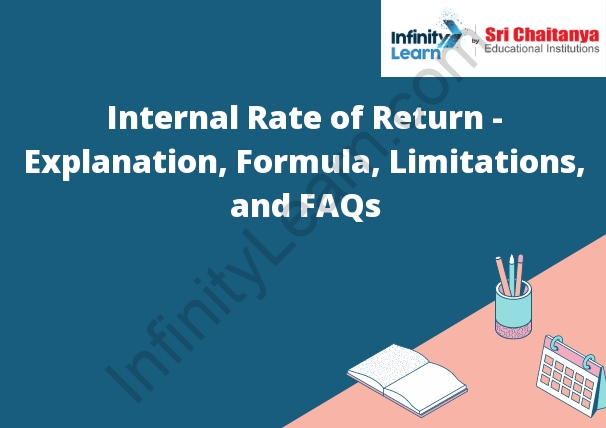Table of Contents
IRR
Internal Rate of Return – Explanation: The Internal Rate of Return (IRR) is a measure of the profitability of an investment. It is the rate of return that makes the net present value of the cash flows from the investment equal to zero.
The IRR can be calculated using a financial calculator or a spreadsheet. It can also be calculated using a trial and error method.

What is the Internal Rate of Return?
The Internal Rate of Return (IRR) is the interest rate that sets the net present value of all cash flows from a particular investment equal to zero. The IRR is also the rate of return that makes the net present value of cash inflows from the investment equal to the initial investment.
Internal Rate of Return Definition
- The Internal Rate of Return (IRR) is the rate of return on an investment that is based on the cash flows generated by that investment. The IRR is also known as the “time-adjusted rate of return.”
- The IRR calculation takes into account the time value of money, which is the principle that money available today is worth more than the same amount of money available in the future. This is because the money available today can invested and will generate its own return, while the money available in the future cannot.
- The IRR calculation also takes into account the fact that cash flows received in the future are worth less than cash flows received today, because they are being received further in the future. This known as the “discount rate.”
- The IRR calculation determines the rate of return that will make the present value of the cash flows from an investment equal to the initial investment.
- The IRR calculation can be used to compare different investments, as it takes into account the time value of money and the different amounts of cash flows that each investment will generate.
Internal Rate of Return Formula
The internal rate of return (IRR) is a measure of the profitability of an investment. It is the rate of return that makes the net present value of all cash flows from the investment equal to zero.
The internal rate of return can calculated using the following formula:
Where:
- CF = cash flow
- n = number of periods
- PV = present value
- The internal rate of return can also calculated using a financial calculator or a spreadsheet.
How to Calculate Internal Rate of Return?
The Internal Rate of Return (IRR) a financial metric used to evaluate the profitability of an investment. It calculated by finding the discount rate at which the net present value (NPV) of all cash flows from the investment equals zero.
To calculate the IRR of an investment, you will need the following information:
- The investment’s cash flow schedule
- investment’s initial investment
- The investment’s final investment
Once you have this information, you can calculate the IRR using the following formula:
IRR = (1 + r) ^ (n / (1 + r) ^ (n – 1))
Where:
- r = the discount rate
- n = the number of cash flows
Internal Rate of Return Example
The Internal Rate of Return (IRR) is the rate of return that makes the net present value of all cash flows from a particular investment equal to zero. The IRR is also the rate of return that the investor would earn if the investment were to repeated annually.
The following example will illustrate how to calculate the IRR for a particular investment.
Example
Suppose an investor is considering investing in a new company. The company has the following cash flows:
Year Cash Flow
1 $10,000
2 $15,000
3 $20,000
4 $25,000
5 $30,000
The investor calculates the net present value of the cash flows to be $10,000. This means that the IRR for this investment is 10%.
What are the Limitations of the IRR Method?
There are a few limitations to using the IRR method. One is that it can be difficult to compare projects with different cash flow patterns, as the IRR calculation depends on the timing and size of the cash flows. Additionally, the IRR method does not always indicate whether a project is worth pursuing, as it only looks at the profitability of the project and not at the cash flows in relation to the investment.









